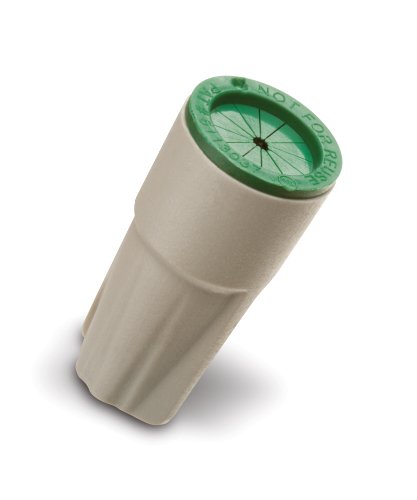- Features
- Description
- Similar Items
Easy-to-use waterproof wire connectors filled with silicone gel
Ensures long-lasting connections of valve and controller wires, even under wet conditions
Pre-twisting of wires is unnecessary; simply insert the wires and twist cap
One-step installation; no mess or hassle with a grease tube
U-V resistant and can withstand a 600 volt surge
Ensures long-lasting connections of valve and controller wires, even under wet conditions
Pre-twisting of wires is unnecessary; simply insert the wires and twist cap
One-step installation; no mess or hassle with a grease tube
U-V resistant and can withstand a 600 volt surge
Binding:
Lawn & PatioBrand:
Rain BirdEAN:
0671983942627Label:
Rain BirdManufacturer:
Rain BirdModel:
WPCONN10Size:
1 X Pack of 10Warranty:
Rain Bird WPCONN10 Waterproof Grease Cap Wire Connectors, 10-Pack. Rain Bird wire connectors feature an easy to use, one-step installation ensuring a solid connection of valve and controller wires; even under wet conditions. Pre-twisting of wires is unnecessary, simply insert the wires and twist the cap! Connectors are filled with silicone gel, so there’s no mess or hassle with a grease tube. In addition, our durable connectors are protected with UV resistant materials and can withstand a 600 volt surge. Installation instructions: Strip #22 - 18 wires 1/2" and #16 - 12 wires 3/8". Align any frayed strands or conductors. Place stripped wires together with ends of insulation even. Twist connector onto wires pushing firmly until hand-tight. Do not over torque. Wipe sealant in and around conductors and connector opening while tightening. Do not reuse. **Important: Turn off power before installing or removing connector. Product to be used in accordance with local and national codes. Specifications: Maximum voltage: 600-volt maximum building wire (1000-volt maximum signs or luminaries). Wire type: copper/copper, do not use on aluminum wire. Wire range: minimum 22/maximum 12. Temperature rating: 105 degree C (221 degree F). Silicone sealant: -45 degree F to 400 degree F. Rain Bird “The Intelligent Use of Water”






